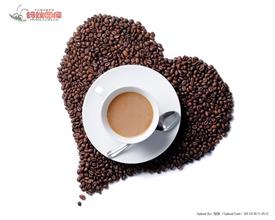Introduction to the description of flavor and taste in the process of coffee semi-washing and honey treatment
Introduction to the description of flavor and taste in the process of coffee semi-washing and honey treatment
One step: retain 100% pectin, and then reduce the water content of raw beans to 10% 12% by either solarization or machine drying or a combination of both.
Another step: according to different needs, adjust the setting of the pectin removal machine so that the parchment shell retains different proportions of pectin, and then reduce the water content of raw beans to 10% Mel 12% by either solarization or machine drying or a combination of both.
Raw beans treated by water washing and fermentation generally have less silver skin attached, but unripe beans retain most of the silver skin. Natural all-day sun and honey-treated raw beans, depending on the amount of pectin retained (more or less honey), more or less silver skin will stick to the coffee beans, and show different shades of orange.
When choosing honey to deal with the defects of raw beans, you need to scrape off the silver skin to observe the color of the coffee beans themselves. Honey treatment of raw beans in baking should also pay attention to, if a large number of silver skin can not be discharged in time, the high temperature will scald the surface of coffee beans, resulting in inconsistent baking color.
In general, raw beans dried in the sun are bluer and greener and more uniform than those dried by machines. The water content of raw beans can not be judged simply according to the color depth. The best water content of raw beans is 9% Murray 12%. The water content of raw beans must be well controlled in storage. Once the water content exceeds 13%, raw beans are easy to breed toxins.
1. Choose beans:
Put the harvested fruit in the water tank, and the ripe fruit will sink, while the unripe and overripe fruit will float up and can be removed.
2, dry:
Put the selected ripe fruit in the square and expose it for 5-6 days until it is fully dry. At this time, the fruit becomes dark brown and the moisture content is 13%.
3, shelling:
After drying, the peel becomes fragile and easy to fall off, and can be removed by machine. Farms run by enterprises usually have their own shelling factories, while small farms are processed by processing centers.
4, selection and grading:
Exquisite farms identify defective beans manually or by machine, pick them out and throw them away. Manual selection usually uses a transmission belt about 1 meter wide, with several female workers sitting on both sides visually picking out bad beans, and some good farms are even selected several times until defective beans are not seen. Machine selection rules use computers to identify defective beans, followed by a grading process that divides coffee beans into several quality grades according to established standards. Good coffee enters the selected coffee market, while bad coffee flows into the commercial coffee market.
Happy coffee growers will first pick coffee cherries from the trees and then pour them into a pool filled with water. Due to the different density caused by the maturity of coffee cherries, overripe and immature coffee cherries and some branches and leaves will float on the surface, while coffee cherries ripe enough will sink to the bottom. Naturally, some of the coffee cherries that passed the first level were screened out in this way.

Important Notice :
前街咖啡 FrontStreet Coffee has moved to new addredd:
FrontStreet Coffee Address: 315,Donghua East Road,GuangZhou
Tel:020 38364473
- Prev

Can I reuse the rest of the coffee froth?-what do you do with the rest of the whipped cream?
Can you reuse the rest of the milk from the caffeine foam?-what do you do with the rest of the cream? first of all, the foam is 80% to 90% full, which can be solved by 10% less than dry. The second is that the crema surface of the espresso is too shallow from the bottom of the cup, causing the foam to float on the crema as soon as the foam is injected. Solution: tilt the cup as much as possible to increase the depth of the surface and bottom of the crema meter. In the note
- Next

Coffee pull gesture skills to make coffee flower drawing picture basic gesture
Coffee pull gesture skills to make coffee pull flower picture basic gesture one, the main process of coffee pull heart. 1. Make a cup of espresso. 2. Dispense the milk foam, go up and down the milk tank, extinguish the atmosphere in the milk foam, shake the milk tank horizontally, let the milk foam form a whirlpool, so that the milk and milk are not fully integrated. 3. After the light espresso, pour the milk and foam from the milk jar into the coffee
Related
- What is the meaning of lactic acid fermentation with coffee bean treatment?
- How to judge the state of foam by sound?
- How does the latte pull out the unicorn pattern? Come to get for a little trick to improve the flower pull!
- Will flower pulling affect the taste of the latte?
- Do you know the history of coffee?
- The difference between honey treatment and sun washing what is raisin honey treatment?
- What kind of milk can a novice use to make coffee foam to keep the foam longer? The correct method and skills of milking tutorial sharing
- Why do washed coffee beans taste sour? Flavor characteristics of washed Coffee
- Introduction to the skill of how to practice the size and height of water injection around the circle of hand-brewed coffee
- How do beginners practice coffee flower drawing from scratch?

